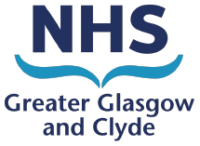Starting solids is an important milestone in childhood development.
Starting solids means gradually introducing a variety of foods to your baby alongside breast milk or infant formula until they are eating the same healthy foods as the rest of the family. Sometimes this is called weaning, introducing solids or complementary feeding.
Starting Solids – NHSGGC. On this page, you will find a range of key messages and lots of helpful resources, including our new NHS Greater Glasgow and Clyde series of ‘Starting Solids Show’ videos. These are designed to help you get started with introducing first foods to your baby.
This information supports the Fun First Food booklet you will receive from your Health Visitor or Family Nurse. Fun First Foods. An easy guide to introducing solid foods. The Fun First Food link also has the information available in 14 languages.
For advice for fussy eating, see links below.
For advice for children who have autism, see link below.
HENRY
Healthy Start, Brighter Future
The HENRY programme aims to support families of children aged 0-12 years with engaging the whole family to adopt healthier eating and lifestyle habits. HENRY addresses a range of areas that are relevant to families including but not limited to; parenting, well-being, self-esteem and confidence, portion sizes, healthy food swaps, getting active as a family, food groups and food labelling. Your dietitian can refer you to the HENRY programme or you can self refer on the button below.
Cow’s Milk Protein Allergy
Cow’s milk protein allergy (CMPA) is a condition that can affect the gastrointestinal tract and cause problems such as wind, pain, constipation and loose stools. It can affect the skin, causing rashes or eczema and it can also cause lower tract respiratory infections or coughs. Many of the symptoms associated with CMPA can occur as a result of other common conditions, or as variants of normal, so it is important to consider CMPA as only one in a range of possible diagnoses.
CMPA can be either an IgE (immediate reaction) involving the immune system or Non IgE (non immediate) and not involving the immune system. If you feel your patient or your baby has CMPA please talk to the Doctor or Health Visitor.
There is information on this page which is designed to help Health Care Professionals diagnose and treat Non IgE CMPA.
There is also a section for parents or carers for the ongoing management of Non IgE CMPA below.
Cow’s Milk Protein Allergy For Health Care Professionals
- The link to the current GGC pathway for management of CMPA
- Information for Health Care Professionals how to support breastfeeding mothers to complete a milk challenge.
- Information for Health Care Professionals how to support bottle feeding mothers to complete a milk challenge.
Cow’s Milk Protein Allergy For Parents or Carers
Once your baby has been diagnosed with CMPA. The following resources may be helpful:
